|
Fayette County
Iowa 1850
Census
|
CLICK TO NAVIGATE
DOWN TO A SECTION
NE IOWA IN 1849
PIONEERS BEFORE 1850
THE FIRST PLATTED VILLAGES
1850 SURNAME LIST
IN 1849 THE RUSH IS TO THE WEST
THE 1850 CENSUS
A LOOK AT EIGHT EARLY FARMERS
A TYPICAL 1850 FAYETTE COUNTY FARM??
|
To Open a Search or Find-a-Word Window, press "Ctrl" and "F" at the same time. |
Site Links:
[] Fayette
History Index [] Iowa
Z Sitemap [] Email
[]
Northeast Iowa Was a Wilderness in 1849---Nearly all of Northeastern Iowa was then a wilderness. From the Miners Express, published at Dubuque January 2, 1850, this statement as to the 1849 population of several counties according to some census that had been taken: Allamakee-277, Benmton-212, Buchanan-406, Clayton, then including Fayette-2500 (Fayette County's population probably would have been around 250, plus or minus 25, in 1849,BZ), Delaware-1500, Dubuque-9185, Winneshiek-275.
In 1850 only the Mission Trail was the primary source of supplies into Fayette County by wagon drawn by oxen. The area below Mission Trail had been open for since the mid 1840's, but the area in Neutral Ground had only been open for two growing seasons. The county was on the frontier, with virgin forests, prairies and marshes that would be almost totally removed for agriculture in the next 20 years.
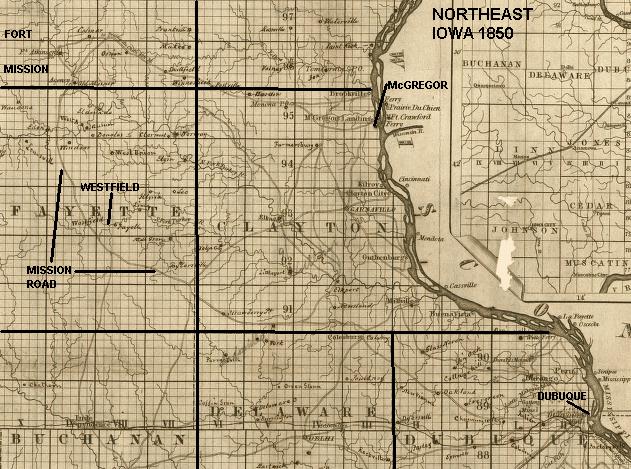
PIONEERS BEFORE 1850
Between 1840 and 1850 there were people who lived in Fayette county, for a while at least, whose names did not appear in the census list recently printed in the column for 1858. Most of those folks had moved away by 1850. A few who continued to live here may have been skipped by the census taker. The names of some of such earlier settlers may be found by searching the history of Fayette county, published in 1878. Others may be secured from a series of twenty-eight newspaper articles, "Fayette County in the Forties" contributed by T.D. Peterman to the West Union Argo in 1901. Those works were written while folks were still living who could remember back to those earlier years.
PETERMAN'S FIRST PIONEER LIST OF THE 1840'S--- ? Atwood, ? Baker, W.H. Bailey, James Beatty, Horace Bemis, ? Bonham, Samuel Barazelton, Benjamin Brooks, Henry Brooks, Hiram Brooks, Jessie Brooks, Nelson Brooks, (their father) Brooks, ? Chlson, Samuel Connor, George cook, James (Jimmie) Crawford, Sam Crane, George Culver, Amos Cummings, Goodson Cummings, Lewis Delzene, Joseph Dickinson, ? Downs, Lorenzo Dutton, Robert Gamble, John Giles, Charles Glidden, ? Hadley, A.J. Hensley, Joe Hewitt, Moses Hewitt, ? Hyde, Charles Jones, Henry Jones, E.A. Light, ? Lucklow, Hyler Lyons, ? Messenger, ? Mullign, Major ? Mumford, John Nagle, Earl Newton, Royce Oatman, William Orrear, Jacob Ourey, John Paddleford, William Paddleford, Willima Palmer, Reuben Perkins, Zopher Perkins, ?2 Pettit, ? Piper, John Randall, ? Rausdell, Ben Reeves, David Ring, William Ring, J. W. Rogers, William M. Rosier, ? Ryan, ? Sackett, Moses C. Sperry and father, ? Spofford, James Stevenson, T.R. Talbot, ? Teagardner, ? Tombs, William Van Dorn, Kitten Voshell, Isaac Webster, Franklin Wilcox, Nathan Wilcox, Sanford Wilcox.
Total for Earliest Familes--- The Peterman list, and the 1850 census list contain a total of about 290 names as possible heads of first families in Fayette County. There are about 215 different family names found in the two lists.
The first Villages in the County---The early platted villages in Fayette county were: West Union-June 1850, Westfield-July 1851, Auburn-1851, Volga City (Lima)-Oct 1851, Taylorsville-Feb 1852, West Auburn-Sept 1853, Centerville (adjoining Taylorsville)-May 1854, Albany-July 1854, Elgin-Feb 1855, Fayette-June1855
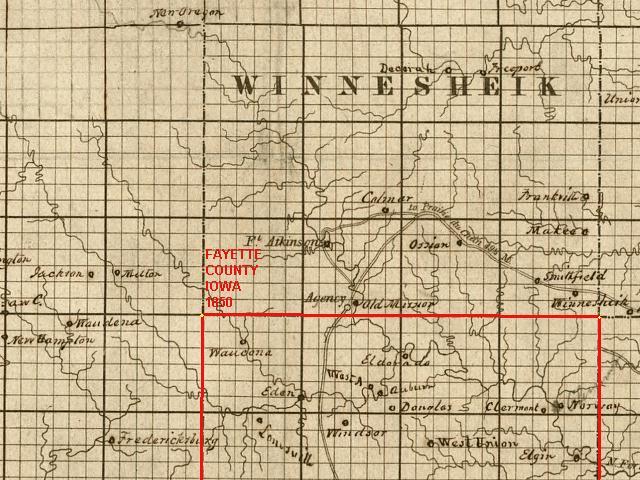
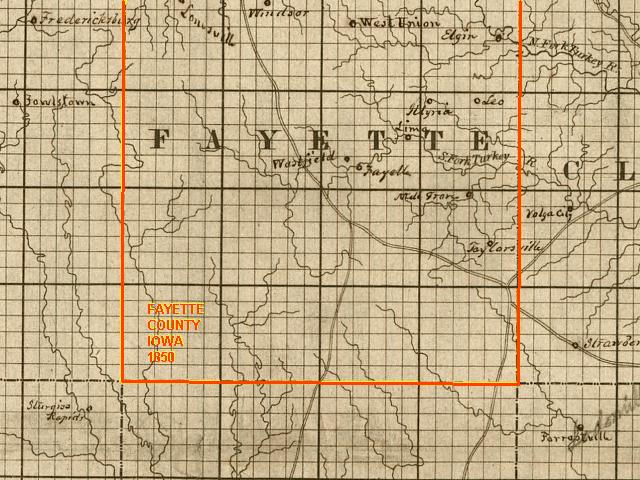
FAYETTE COUNTY IOWA SURNAMES 1850 CENSUS
| ALEXANDER ANDERSON ANDRUS AUSTIN BAKER BARNS BARTLETT BELL BERK BISHOP BRADSHAW BRONSON BROOKS BROWN BURDICK BUTLER CARLTON CARROLL CASE CAVANAUGH CLARK CONNER CRAWFORD CROOKS CROSBEY DAVIS DEFORD DELOZINE DENNIS DIMOND DOOLITTLE DOUGLASS DOWNEY DOWNS EARL EDDY ELLIS ELROD ENDERS EVERSON |
FELCH FINNEY FOLLETT FORBES FORBS FOSTER FRASIER FREEMAN FUSSEL GALLAHER GARDNER GARRISON GEAR GERMAN GIBLIN GIFFORD GITCHEL GOLLOHER GREENUP GUNDERSON HALING HALL HANNAH HANSON HARTSOFF HATTON HENDERSHOT HENMAN HENSLEY HENSLY HIFF HITCH HOOVER HOPKINS HORD HOTTON HUFF HUGHSON HUMMEL HUNT HYLER JACKSON JENNINGS JOHNSON KELLOGUE KERN KINGSBURY KIRKPATRICK |
LEIBRAND LEVERETT LIGHT LIPPENCOTT LOCKHARD LONG LOTT LOUNSBURY LOWE LUDLOW LUMSDEN LYON MAIN MARKLEY MARTIN MATTHEWS McCAMERON McDUFFY McGEE McGLOUGHLIN McKINLEY MILLER MOIN MORON MORRIS MORRISON MUSSELMAN NEFF NEWTON NUTTING OLEYSON OREY OSBERN OTTERCREEK PACKARD PALMER PARK PERKINS PHILIPS PIPER |
RANDEL REEVES RICE RICHARDSON ROBERTSON ROGERS ROOT ROSIER ROWLEY RUSSEL SAWYER SCOTT SEWARD SHEELEY SMITH SOUTH STANSBURY STEPHENSON STEVENS STOBOUGH STRONG STURGES TAILOR TALBOT THOMPSON TOLLOT TURNER VOSIAL WARNER WATROUS WATTERS WELCH WELLS WESTERN WHITEBY WICKHAM WILSON WOODEL WOODS WOODSON |
From the Dubuque
Miner's Express, 1849-1850
---There is very little available about
early Fayette history. The Miner's Express was started in Dubuque in 1847.
It was the first paper published in northeastern Iowa, and perhaps first in
Iowa. There were a few items showing some topics of interest in the summer
and fall of 1849, and spring of 1850, when Robert Alexander and his son-in-laws,
the Robertson's came to the Westfield Twp. area. This was the beginning of rapid
settlement in Fayette County.
Iowa vs. California in 1849---Written on May 16, 1849, shows that the
first competition for settlers between Iowa and California started in 1849:
"We were apprehensive that the tide of emigration setting towards the
golden regions of California, would have the effect to deprive Iowa of the usual
spring accessions to her population. We are glad to perceive, however, that such
is not the case. The fertility of her soil, and the salubrity of her climate,
are too well known to be neglected. Thousands are leaving the sickly climate of
Illinois, Indiana, Michigan, and Missouri, or the worn out soil of the eastern
and southern States, to seek a home of comfort, health and happiness upon the
beautiful prairies of Iowa. A very considerable addition will be made to the
population of Clayton county the present spring. The same may be said of the
North of Iowa generally; and we learn that a large number are locating in the
Valley of the Des Moines River."
Many immigrant Wagons---How rapidly people were going west and how they
were traveling appears from this item, May 30, 1849: "Up to the May 18,
1849, 2850 emigrant wagons had crossed the river at St. Joseph, and at several
landings thence to Council Bluffs, 1500. There is an average of four persons and
eight oxen or mules to each wagon. Whole number now on the Plains from St.
Joseph and points above, 4359 wagons, 17,499 men, and 4,800 animals.
Land Warrants for Sale---this advertisement for sale of land warrants,
June 6, 1849. "Important to Settlers and Emigrant": The Bounty
Land Warrants issued to the soldiers and volunteers in the Mexican War, have
come into general use in entering government Lands and a great saving is thus
gained to the settler, as the warrants can be obtained at prices which reduce
the cost of U.S. Lands to one dollar per acre. These Warrants can be used by
settlers in locating lands upon which they have made improvements, or upon which
they have acquired a preemption right; and can be placed on 160 acres of Land,
adjoining in any legal subdivisions, such as four forty acre tracts, two eighty
acre tracts, etc. The subscribers will keep a supply of warrants constantly on
hand, which they will sell as low for cash as they can be purchased in the West.
They will also supply warrants by the quantity to those engaged in the business
at low rates. Dubuque, March 20, 1848, Robertson and Holland, Land Agents."
1850 CENSUS REPORTS
A 1850 Census Report---Between September 26 and October 9, 1850, Eliphalet Price, living in Clayton county, made a census enumeration for Fayette County, which had that year been set off from Clayton County. He probably traveled on horseback to reach the one hundred fifty four families or houses which he found and listed for this entire county in 1850.
The Census of 1850 is Stimulating to the Imagination---As one studies the old fashioned handwriting of Mr. Price, and scans the names of the several hundred men, women and children he listed, it is easy to let the imagination go and try to take in fancy that trip with the enumerator over the unbroken hills and prairies and through the original forests of Fayette County---the prairies with their tall waving native grass and flowers, and the forests with only an occasional lob cabin sheltering some pioneer family.
The First "Old Timers" were the families found in Fayette County in the summer and fall of 1850 by the Census taker, which was 10 years after the first white settlement in the southeaster part of the county, and only months after the "legal" movement of whites north of the Neutral Line.
Heads, or other Representative of Familes Found Listed in Fayette County, Iowa, Census of 1850---The census taker started in the southeast corner of the county and worked back and forth toward the north. Thus the number by each name indicate the approximate location in the county from south to north, with the lower numbers being in the south part of the county. Likewise, consecutively or close numbers were from the same "neighborhood." When a number is in parenthesis another person has been listed as apparent head of the house. Where one family name applies to two or more persons only the name of the apparent husband, or of the oldest of the named group is given
Heads of Familes, Fayette County, Iowa, 1850---Robert Alexander 31 (Note, he was operating on a sawmill on the southwest portion of Westfield in the Fayette valley, therefore numbers close to him are in the Westfield/Fayette area,z) , Noah Alexander 34, William Anderson 9, Horace Andrus (?) 48, Wilcox Aquilla (?) 64, Peter Alsern (38), James Austin 147, Solon W. Barnes 6, Henry H. Baker 15, William Bartlett 141, Charles Bell (96), Margaret Berk 61, Solomon Bishop 63, Joseph Bradshaw 11, Harvey S. Bronson 124, Chansey Brooks 5, David Brooks 5, John Brooks 25, Mattison Brown 52, Oliver Brown 126, Martin Burdick 151, Harrison Butler 32, Absolom Butler 128, Caleb D. Carlton 117, James Carrol 84, Washington L. Case, 107, William P. Cavenaugh 62, Lukins Clark (?) (129), Chester Clestern (?) 105, Margaret Connor (76), John Conner85, Matthew Connor 90, Samuel Connor (90), Joseph Crawford 129, Thomas Crooks (49), Thomas Crooks 49, Franklin Crosley 20, James Davis 154, Joseph Deford 78, Lewis Deloynie 152, Benjamine Dimond 87, Thomas Douglas (38), John Downey (114), David H. Downs 142, Morris Earl 137, Hiram Earl (137), James Earl 138, John Eddy 137, Rudolphus Eddy 144, Charles Ellis (129), Dempsey Elrod 64, Ely Elrod 129, Sarah Elrod (129), Isaac Enders 143, Knud Everson 82, Ambier Everson (92), William Fetch 67, Daniel I. Finney 9, Isaac Fitch 60, Thomas Follett 51, Elipholet Follett 112, Simon Follett (112), Edwin Follett (117), Rebecca Forbes (87), Simeon B. Forbes 88, Joseph Forbes 89, Joseph Foster 140, Robert Freeman 19, William Frasier 76, John Frasier 82, William Fussell 28, David E. Fussell 30, Oliver P. Gallaher 55, Ephrom Gardner (151), James Garrison (55), Helen Gear (47), David German 8, William Gibblin 53, Levi Gifford (136), Calvin Gitchell 150, Stephen Greenup 125, Nathaniel Hall (119), John Hannah (38), Elisha Hartsoff 132, Samuel Hatton 56, John Hendershott 108, Michal Henmon 42, Andrew Hensley 45, Abraham Holing 149, Jacob Hoover 131, Henry Hopkins 40, Lysander Hopkins (137), Elizabeth Hopkins (137), Lyman Hord 127, Oley Houson 94, Bent Houson (94), Sarah Huff (114), James Hughson 148, Sarah Hunt (15), Charles Hyler 95, Lemuel Iliff 118, Benjamine Iliff 122, Hiram Jackson 103, James Jennings 29, John Johnson (106), Henry Johnson 106, Jason Johnson 111, Elf Johnson (111), Anson Kellogue (3), John Kellogue (31), Thomas Kerr 119, John Kerr (119), Hannah Kirkpatrick (129), Chaunsey Leveritt 110, Jacob Librand 68, Crotus A. Light 46, Harry W. Light 43, Remembrance Lippencott 72, Hugh Lockard 7, Gabriel Long 102, Monroe Lott (87), Robert K. Lounsburg (13), David Lowe 18, Stephen H. Ludlow 47, William Lumsden 50, Alexander Lumsden (50), Clark Lukins (129), Joseph Lyon 104, Ermina Lyon (104), Dorcus McCameram (80), Daniel McDuffy 145, Joseph McGee 36, Thomas McKinley (26), William McKinney (13), George McKinney 14, Joseph McLaughlin 57, Andrew Martin 116, John Matthew 117, John Matthews 108, America Mattews (99), Avril Miller 23, George Miller (43), Wilson Miller 66, Eugene Moine 22, John P. Moine (22), Evleine Morkley (2), William Morris 49, George Morrison 123, Russell Moron (147), Alexander Mussleman 120, George W. Neff 33, Palmer Newton 21, William E. Newton (21), Jerod Nutting 100, Eren Oleyson (93), Jacob Orey 74, Mary Ottercreek (87), Betsey Ottercreek (90), Sirenius Packard 99, Francis Palmer 97, Albert Palmer (97), Asa G. Park 4, Woodman Perkins (1), Calvin Perkins 12, John Philips 105, Ebenezer Piper (137), Alonzo Randel 54, Stephen Reeve (88), Samuel Rice 73, Richard Richardson 26, Phroney A. Rickell (71), Jacob W. Rogers 65, Jacob Rosier 133, George Rosier (133), William Root 77, Ely Root 79, Emily Root 81, George Rowley 106, Nickolas Russell 58, Charles Sawyer 113, Allen Sawyer 114, james L. Sawyer 115, Thomas Scott 41, Sylvester Seward 3, Conwright Sheeley (31), Chansey S. Smith (23), Thomas J. Smith 39, Henry F. Smith 71, George Smith 83, David Smith 136, Charles Smith 139, Asa South 129, George Stansbury 75, james B. Stephenson 86, Samuel Stevens 98, Susan Stobough (57), Philip Stobough 59, Thomas B. Sturgis 38, David Tailor 1, Silas Tailor 10, Willima Thompson (69), Anthony Thompson 96, John Turner 130, Francis Vosial 16, Peter Vosial 17, Marrion Warner (117), Edwin C. Watters (or Wotters) 153, Levy W. Watrous 44, Lucy Welch (4), William Wells (68), Matthew Wells 69, Sarah Wells (69), David Wells 70, Joshua Wells 80, George L. Whitley 24, Arson Wickham 146, Aquilla Wilcox (64), James Wilson 137, Thomas Wilson (146), Joseph Woddel 39, Thomas Woodel 37, Benjamine Woods 27, Jimerin Woodson 13.
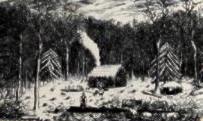
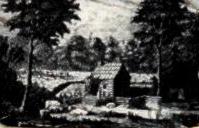
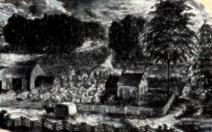
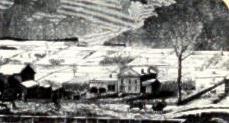
ALMOST EVERYONE FARMED
Farming around Fayette in the late 1840's/early 1850's---The history of the Fayette community as a permanent settlement, like that of most local histories, begins not with a town but with farmers and farming, (and the merchants/tradesman that follow and support the farming endeavor, z). What kind of farming is generally left to the imagination. In the old 1850 census report I found what I think is the early farming conditions available for Fayette and Fayette County. On a page for that purpose of his report Mr. Price listed eight Fayette county farmers and statistics relating to their land, machinery, live stock, crops, etc.
What Eight Farmers Owned and Produced---These eight farmers owned property as follows: 1569 (average of 196 acres each,z) acres of land, of which 585 (average of 73 acres each,z) acres were improved (improved land was land that had been cleared of timber and brush, was either capable of being plowed or utilized for grass pasturing,z), and all valued at $9080 (1135each,z). Farm implements and machinery valued at $864 (108 each,z). Live stock valued at $2205 (275 each,z), consisting of 18 horses ( about two each), no asses or mules, 19 milch cows (about two each), 25 working oxen (three each), 32 cattle (4 each), 60 sheep (12each), and 190 swine (14 each, pigs were allowed to run in the open lots and timber and easy to raise as wild hogs).
Total Production---These eight farmers in total, during 1849, produced crops estimated as: wheat-485 bu, rye-0 bu, Indian corn-5000 bu, oats-484bu, tobacco-300bu, wool-198lb, peas and beans-8bu, potatoes-222bu, buckwheat-115bu, butter-1510lb, hay-183tons, grass seed-2bu, maple sugar-1950lbs, molasses-39gal, beeswax and honey-1238, home manufactures valued at $48, slaughtered animals-$241.
The eight 1849 Fayette County Farmers showing in Mr. Price's 1850 Census---They were the farming ancestors that "led all the rest."
Jerod Tailor (or Taylor) Farm (three miles northeast of Arlington,z)---On March 31, 1849, Taylor entered (claimed) 120 acres of land in Fairfield township, 40 being in Section 14, 40 in Section 15, and 40 in Section 23,92-7 (This land is exactly two mile north and one mile east of present Arlington, or one mile north of the Talyorsville Cemetery, z). Seventy if his acres were listed as improved land (capable of cultivation or pasturing,z), machinery-$100, 1 horse, 2 milch cows, 2 working oxen, 5 other cattle, 6 sheep, 22 swine, total value of livestock-$219. Produced: 60bu wheat, 200bu oats, 25lbs wool, 1bu peas and beans, 15bu potatoes, 100lbs butter, 30 tons hay, 2 bu grass seed, 1200lbs maple sugar, 30gals molasses, 50lbs beeswax and honey, slaughtered animals-$15. Tailor's name was not on the 1855 Fayette County tax record (apparently he had moved on, which was often the case with pioneer families, settle for a few years and move west hoping for better conditions,z).
Chaunsey Brooks Farm (three miles south of Fayette,z)---60 acres of improved land, farm machinery-$50, 3 horses, 3 milch cows, 5 other cattle, 8 sheep, 25 swine, livestock value of $266. Produced: 80bu wheat, 200bu corn, 50 bu oats, 100lbs butter, 15ton hay, 50lbs maple sugar, 60lbs beeswax and honey, $50 in slaughtered animals. On May 24, Chauncey Brooks entered 160 acres of land in Section 12-92-8, now Smithfield township (This farm would have been 2 1/2 miles south of Grandview Cemetery at Fayette or 1 1/2 miles north of the Maynard corner, along the west side of present Hwy. 150 on the creek that is visible from the highway,z). That neighborhood is still called (in 1940) by old timers, The Brooks neighborhood.
Solon Barnes Farm (five miles southeast of Fayette in the Korn Hill area)---35 acres of improved land, $5 machinery, 1 milch cow, two working oxen-$40. Produced: 300bu corn, 30bu oats, 200lbs tobacco, 50lbs butter, 4 tons hay, 310lbs beeswax and honey, $10 animals slaughtered. Barnes was not found among entrymen prior to 1850. In 1855 tax record indicated assessed on 80 acres in Sec. 1-97-7, now Fairfield township (This farm was five miles southeast of Fayette on the actual Korn Hill area, or five miles northwest of Arlington. Korn Hill itself about 3 1/2 miles east of Fayette and one mile south off the present blacktop road called Korn Hill Road,z).
John Brooks Farm (Korn Hill area)---40 acres improved land, $75 farm machinery, 2 horses, 3 milch cows, 4 working oxen, 9 other cattle, 3 sheep, 10 swine, total value of $345. Farm products: 80bu wheat, 200bu corn, 30bu potatoes, 300lbs, butter, 20tons hay, 100lbs maple sugar, 3gals molasses, $30 slaughtered animals. John Brooks on My 24, 1848, entered 160 acres in Section 7-92-7, which is nor Fairfield township. This was in the same area of Korn Hill that Solon Barnes hand entered.
William Fetch Farm---40 acres improved land, $100 farm machinery, 1 horse, 3 milch cows, 4 working oxen, 8 other cattle, 5 swine, total value $246. Farm products: 10bu peas and beans, 150bu potatoes, 100lbs butter, 30tons hay, 300lbs maple sugar, 1gal molasses, animals slaughtered $21. Fetch was not found among the entrymen records prior to 1850, and his name was not on the 1855 tax records. The location of his farm is thus unknown, z.
George L. Whitley Farm (three plus miles north of Fayette on Hwy 150)---100 acres of improved land, $50 in farm machinery, 5 horses, 2 milch cows, 2 other cattle, 13 sheep, 12 swine, total value $649. Farm products: 75bu wheat, 3000bu corn, 190bu oats, 47lbs wool, 60lbs butter, 7tons hay, home made manufactures $30, slaughtered animals $30. No record was found of any entry by Whitely of government land prior to 1859. This was probably "Lemon"(George Lehman) Whitely who in the 1855 tax book was assessed on 240 acres in Section 26-93-8, now Westfield township. I wonder if some of the Whitely (or Whitley) descendants still plow corn where their ancestor raised that bumper crop of 3000 bushels. This George L. would be great-great-grandfather to Harold Whitely's children, I think.
William Wells Farm (the northern part of present West Union)---200acres of improved land, machinery $400, 4 horses, 4 milch cows, 13 working oxen, 3 other cattle, 30 sheep, 25 swine, total value $697. Farm products: 200bu corn, 70lbs wool, 14bu potatoes, 60bu buckwheat, 500lbs, butter, 70tons hay, 300lbs maple sugar, 5gal molasses, 818lbs beeswax and hone, slaughtered animals $35. William Wells on December 5, 1849, entered 160 acres of land in Section 17-94-8, now Union township. William Wells started the town of West Union.
Remembrance Lippencott Farm (on the northeastern outskirts of present West Union)---40 acres improved land, $75 farm machinery, 2 horses, 1 milch cow, 10 swine, value $177. Farm products: 40bu wheat, 700bu corn, 15bu oats, 100lbs tobacco, 56lbs wool, 3bu peas and beans, 13bu potatoes, 55bu buckwheat, 300lbs butter, 7 tons hay, value of home manufactures $18, animals slaughtered $50. I do not find any original entry of land by Lippencott prior to 1850. In 1855 he was taxed on 280 acres in Sections 9, 10, 15 of township 94-8, now Union Township, are the three section around the northeastern outskirts of present West Union).
Why Were Only Eight Farmers Listed in the 1850 Census of Price?--- Why Barns, Fetch, Whitely, and Lippencott appear on this list of farm operators and do not appear yet to have entered any government land; and why data is given for none of the other 146 households found in the summer of 1850 by Mr. Price., in which homes all but a few of the men were listed as farmers, is something some of you may wonder about, as I have. Can anybody throw any light on this subject?
Comments About the Eight Farmers---For the eight farmers for whom the 1850 census gave property and products data these facts appear: Tailor let in oats, maple sugar, molasses and diversity in stock and products. Cash value his farm $1000.
C. Brooks though high in cattle did not lead in any one respect. Value farm $1000. Solon Barnes let in wheat and tobacco. Value farm $180. J. Brooks let in cattle (except working oxen). Value farm $800. Fetch let in potatoes. Value farm $300. Whitely let in horses. Value farm $2500. Wells led in total live stock, wool, hay, beeswax and honey. Value farm $3000. Lippencott probably made the best showing of diversified farming for improved acres. Value of farm $1300.
I think most of the residents enumerated in 1850 had come too late to raise a crop in 1849, (and that is why they did not show on the farm census). Some of the older residents were probably "settlers" on government land which they expected to acquire but for which they had not yet secured a legal title.
---Keep in mind there were 154 families shown on Prices 1850 census of Fayette County.
Fayette County is 6 townships wide and 6 townships "tall." Each township is 6x6 miles or 36 square miles per township. Total square miles in Fayette County therefore is 36x36 or 1296 square miles, which when divided by the 154 families mean there was only one family for every 8.5 square miles.
Not all of these families were farming, as one of the first tradesman to follow farmers into a pioneer area are millwrights who would set up sawmills on the Turkey and Volga Rivers. Plus traders and merchants were always pushing into the frontier. Assuming about 100 of the families were setting up farming claims and perhaps attempting to plow or pasture 60 acres each, which would probably be generous at this early date, only one growing season after the land was officially opened to farmers, only 6000 acres of the 83000 acres in Fayette County were being farmed. Within ten years almost every inch of the county would start to be exploited in some fashion by the rush for land and a living on the frontier.
Thus a typical farm in 1850 Fayette County consisted of ---About 200 acres of land, which when rounded off is a square of land about 950yds by 950 yards. About a third of the land was cleared and plowed with a one furrow (blade) plow walked behind and pulled behind two or three oxen (steers) as they were easier to control and could work longer than horses. Oxen would do much of the heavy work as they are stronger than horses and do not require supplemental grain in their diet like horses. However draft horse being more agile and faster working would be a trade up when possible. Not all of the improved land was plowed and planted (by hand) because pasture and hay would be needed for the livestock. It took a lot of hay and grain to over-winter livestock in the long northern winters. Planting, harvesting and preparing grain crops was very labor intensive so small field of only a few acres (5-10 were often interspersed around the farm on the better hill or bottom land soils. Wet slough land was too hard to work; upland hilltops often were very nutrient poor soils. The best field were often on the river and creek edge lands. A ten acre field would be about 200 by 200 yards, a five acre field about 150 by 150 yards. A 100 by 100-yard field would be a little over 2 acres, while a football field 100 by 50 yards would be is just over one acre. There were many of these small fields, and if fenced often with split logs or "split rails" until barbed wire, which was expensive was brought in by teamsters (haulers by wagon) from either the Dubuque are by way of the Mission Road, or from the McGregor area over the Timber Road. Each farm had a couple of horses, used to pull a wagon, thresher, and reaper if the equipment was owned. Much of the early harvesting would have been by hand methods. Hand picking corn and throwing it into a wagon. Hand shocking corn, oats, barley, and wheat for later hand thrashing. Horses would pull wagons and carriages and sometime be ridden. Often the horses where large draft strains like the Belgium's. Each farm would have 1-3 milk cows and a few head of cattle raised for meat or to sell. You could not keep a many cattle or other livestock around for long as food harvesting to over-winter would be prohibitive. Farms also relied on a small flock of 10-20 chickens, and sometimes other small domestic animals. Many pioneers would also rely heavily on local game, generally procured by flintlock guns of the day. Farming was still done mainly with iron and wood hand tools. Draft animals could pull a small one-blade plow and a harvesting wagon, but most of the work was still done my hand, by manpower. All buildings were put up from native logs cut, shaped and secured by hand. Log houses, small barns, woodsheds, chicken coups, smoke houses, etc. Everything was hauled on the farmer's own wagon to start the very first pioneer farms. There were no teamsters or business, or mills yet. Support tradesman would follow several years after the first pioneer farm families. One man generally could not make it alone because of the human power needed to survive the amount of farm work to be done. A small flock of sheep, perhaps 6-12 was often kept to supply wool, and of course mutton. But a source of warm clothing was needed. And for pioneers that generally meant wool yarn spun and knitted or woven. Some animal skins could and would be used but wool was better and more reliable. Swine were quite easy to care for and generally allowed to run fallow or wild in the timber and to fend for themselves until "rounded" up, or just hunted and shot. Farmers could handle 10-20 or more head of pigs quite easily. They were "home" butchered in the fall when it was cold. The stomach made into bacon and legs made into hams. The remainder of the meat could also be soaked in a brine solution and smoked in a slow burning hickory fire or smokehouse and would keep well into the summer months. If large amounts of salt were available the meat might me made into salt pork by rubbing salt into the tissue and packing it in salt to preserve the pork. Thus pork became one of the easiest and first meat products capable of transport to villages to the east and sold or exchanged for the few basic necessities the pioneers needed. Other farm commodities would need to be produced in excess for transport by wagon to market in McGregor or Dubuque 2-5 days away, if Fayette County farming was to be successful. This was farming in the wilderness where the major markets were themselves frontier towns of a few hundred to a thousand new people themselves on the frontier.
Prices of Farm Products in 1849---On October 24, 1849, the Dubuque Miner's Express published the following: "Dubuque Market"--The weather, for the last few days has been delightfully pleasant, and business on our streets has very much revived. On Saturday last we observed more wagons from the country than for a long time previous. The roads are in a tolerably good condition at this time, and farmers are improving the opportunity to bring their produce to market. WHEAT is in demand at from 55 to 60 cts a bu. A tolerably good supply at this time, but a ready cash market for all that is brought. CORN, Old 25 cts/bu, New 20 cts/bu. OATS, 18 to 20 cts/bu. Hay, 5.50 per ton. PORK, a small quantity coming into market, prices range from 3 to 3.50, BUTTER 12 to 15 cts per lb. HIDES, green 2 to 2 1/2, dry 5 5/8. Wood $2 to 2.50 per cord.
|
To Open a Search or Find-a-Word Window, press "Ctrl" and "F" at the same time. |
Site page links:
[] Fayette
History Index [] Iowa
Z Sitemap [] Email Iowaz
[]
|
|
Sign
our Guest book
IOWAZ
SITEMAP
Any reproduction of this site or it's contents requires express written consent.